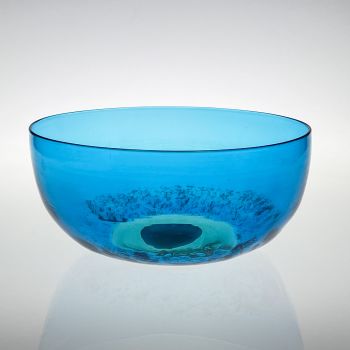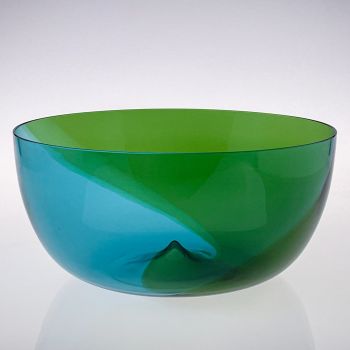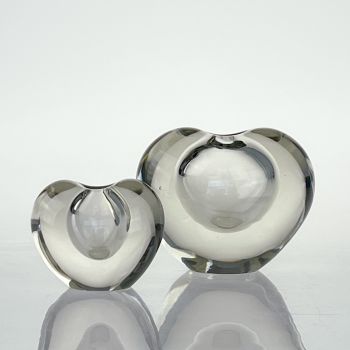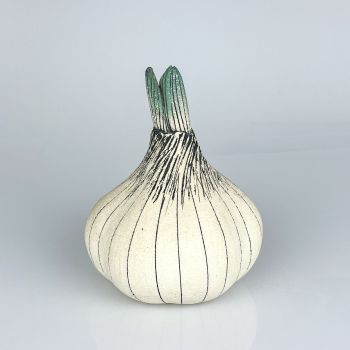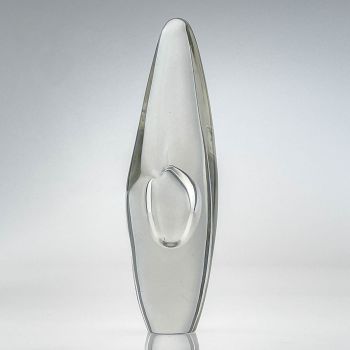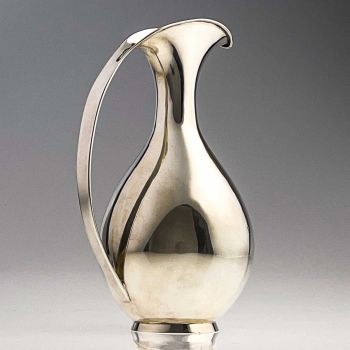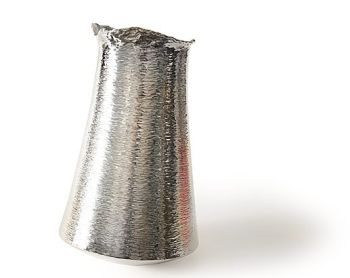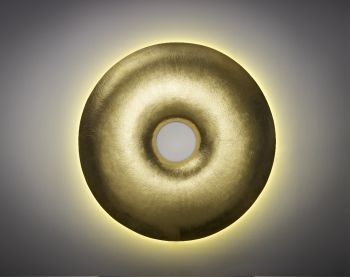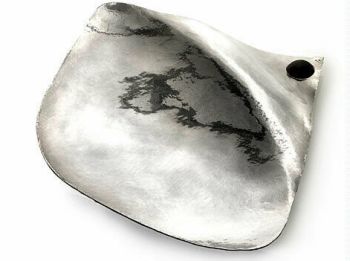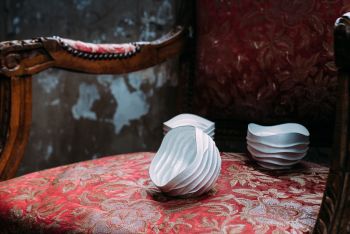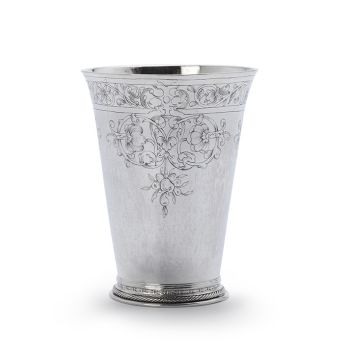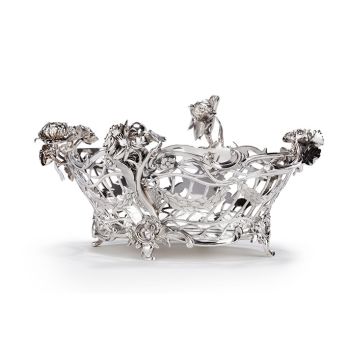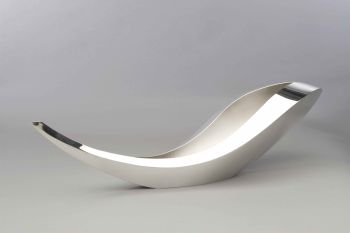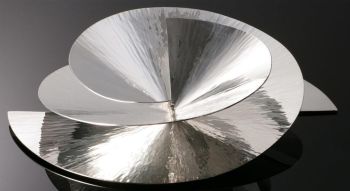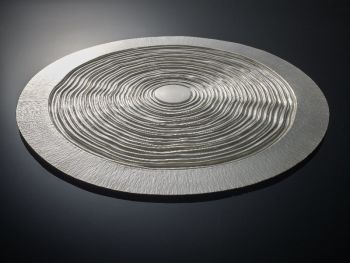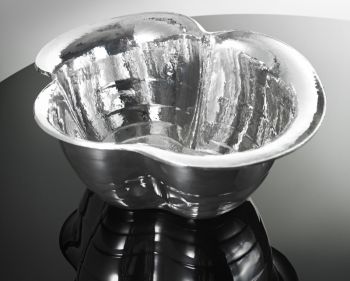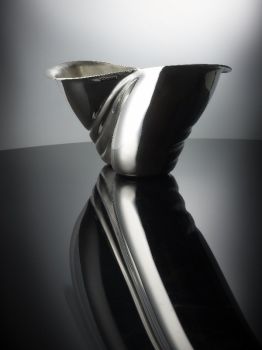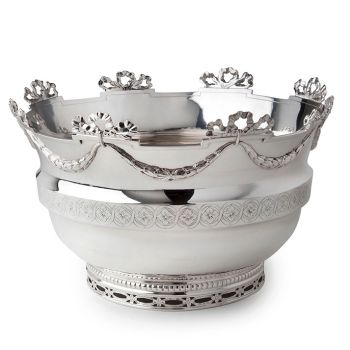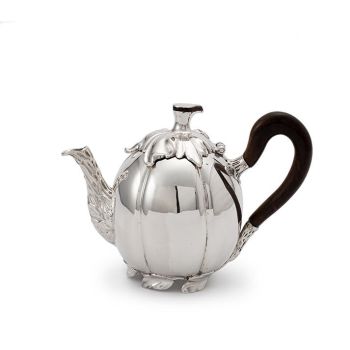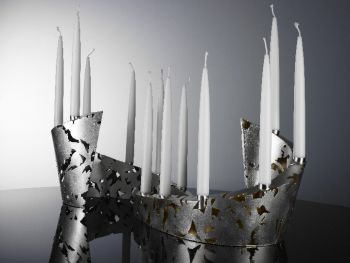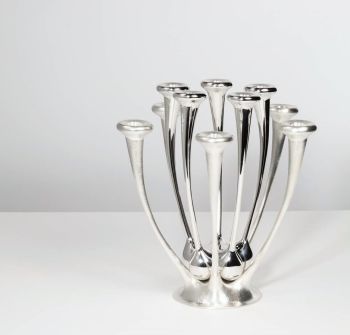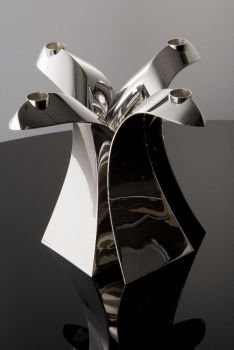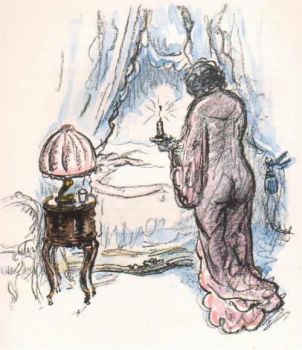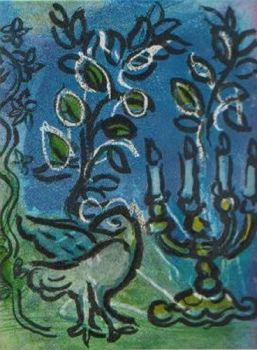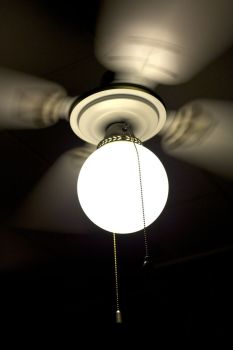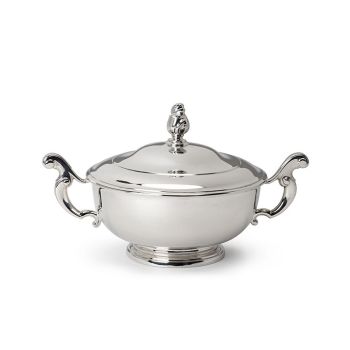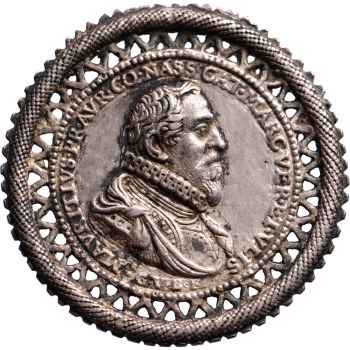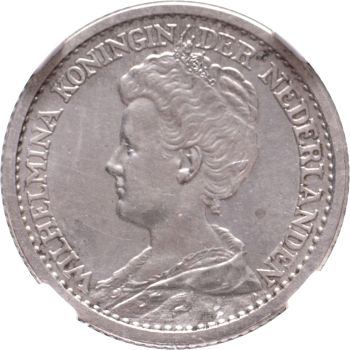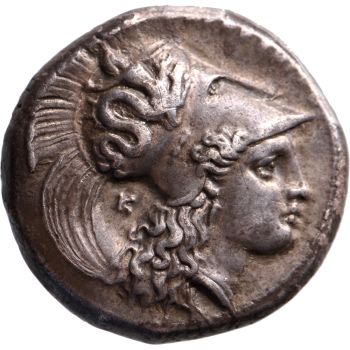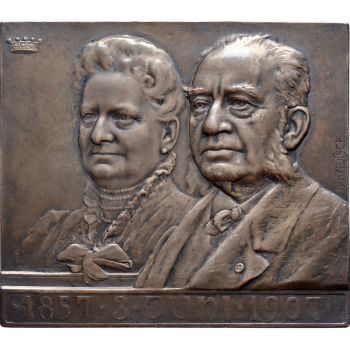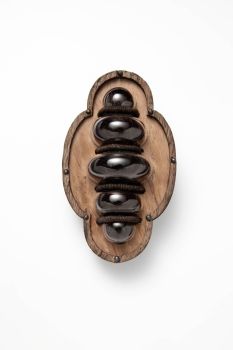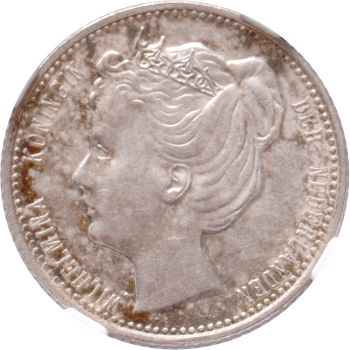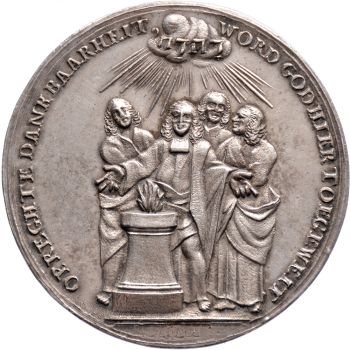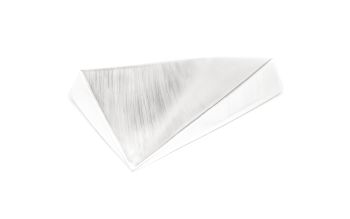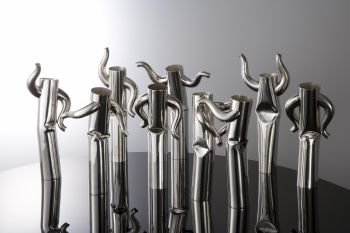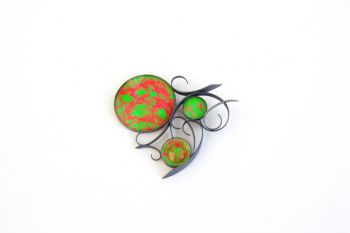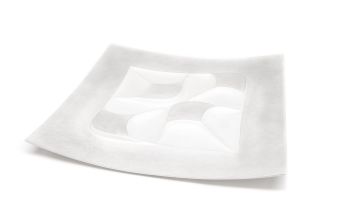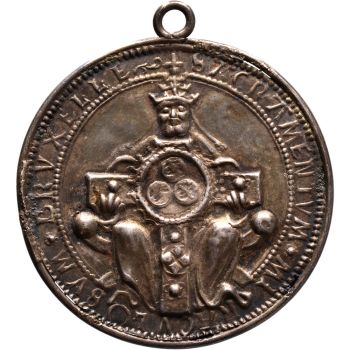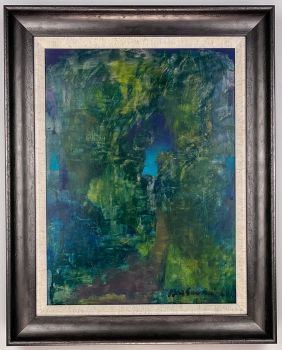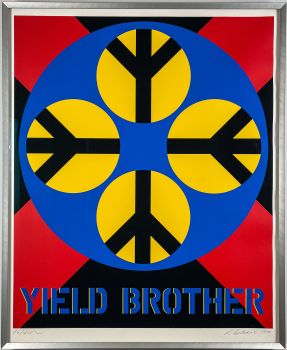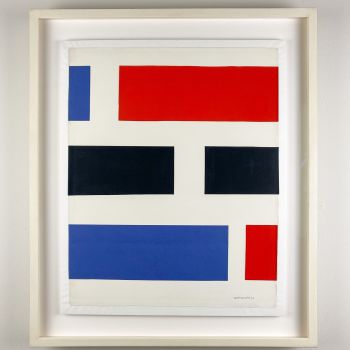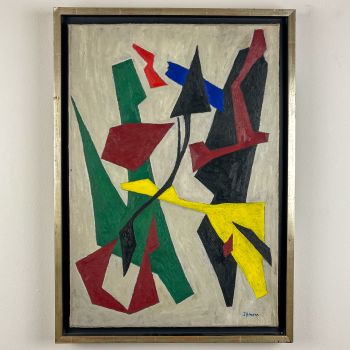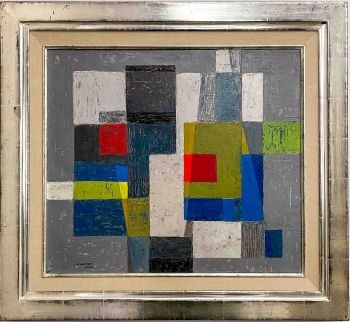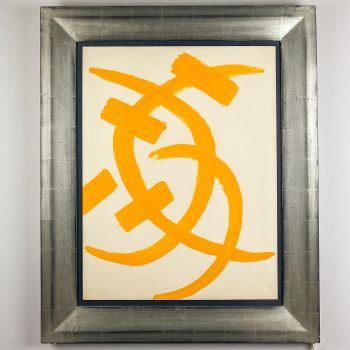Tapio Wirkkala – A Sterling silver three-armed candelabra, model TW202, Handmade to Order – Kultakes 1964
Tapio Wirkkala
Plata
34 ⨯ 26 ⨯ 6 cm
ConditionGood
€ 4.000
Van Kerkhoff Art
- Sobre la obra de arteA three-armed candelabra in Sterling silver, model TW 202. Designed by Tapio Wirkkala in 1959 and executed by the craftsmen of Kultakeskus in 1964.
This model candlestick was never made in serial production and could only be commissioned. The model could be ordered in two sizes a large size, like this one that holds a normal size candle or a smaller model that holds a smaller sized candle (similar to candlesticks model TW189).
The candelabra has a completely smooth surface and tapers to about two-thirds of its height. In a sphere fitted there, two arms split off on either side. The candle holders are tapered and end in a chalice.
About Tapio Wirkkala
Tapio Wirkkala (1915-1985) was a Finnish designer and artist, best known for his work in glass and other materials. Born in Hanko, Finland, Wirkkala studied at the Central School of Arts and Crafts in Helsinki and later at the Helsinki University of Technology. Throughout his career, Wirkkala worked in a wide range of mediums, including glass, ceramics, metal, and wood, and was known for his innovative use of materials and his ability to create pieces that were both aesthetically pleasing and functional.
Wirkkala’s work is characterized by his use of clean lines, organic shapes, and natural forms. He was particularly inspired by nature and was known for his ability to capture the essence of organic forms in his designs. For example, one of his most famous pieces is the “Birch” vase, which was created by casting liquid glass into a mold made from the trunk of a birch tree. This piece is a prime example of Wirkkala’s ability to combine his love of nature with his expertise in glassblowing techniques.
In addition to his work in glass, Wirkkala was also highly regarded for his work in ceramics. He collaborated with several Finnish ceramics companies, including Arabia and Iittala, and was known for his ability to create pieces that were both beautiful and functional. Some of his most famous ceramics designs include the “Finlandia” vase and the “Rye” dish. These pieces, like much of Wirkkala’s work, are recognized for their simple yet elegant designs and their timeless appeal.
Wirkkala was also a prolific industrial designer and worked with a number of well-known Finnish companies, including Kultakeskus, Nuutajärvi, and Iittala. He was known for his ability to create functional and stylish products that were made with the highest quality materials. For example, he designed a range of cutlery for Iittala that is still in production today and is considered to be a classic example of Finnish design.
Throughout his career, Wirkkala received numerous awards and honors for his work. He was a member of the Royal Academy of Fine Arts in Finland, and his work was exhibited in museums and galleries around the world. Despite his success, Wirkkala remained humble and dedicated to his craft. He once said, “Design should be like a river, flowing and changing with time.”
Marked
TW (Tapio Wirkkala), 916H (916/1000 silver fineness), Kultakeskus Oy mark (reclining lion) and Finnish National control mark (heart and crown). Yearmark L7 (1964).
Execution
Handmade to order. Kultakeskus Oy, Hämeenlinna, Finland 1964.
Condition
This candelabra is in very good condition, Some minor scratches and tiny dents consistent with age and use. No inscriptions.
Literature
Marianne Aav, TAPIO WIRKKALA eye, hand and thought p. 363
Dimensions
Height 34 cm
Width 26,5 cm
Depth 6,5 cm
Weight 899 grams - Sobre el artista
Tapio Wirkkala (1915-1985) fue un genio del diseño con múltiples talentos, ampliamente considerado una figura destacada del arte industrial finlandés moderno. La amplia cartera de Wirkkala abarca desde vidrio, muebles y diseño de productos hasta escultura, planificación urbana, arte, gráficos e incluso la creación de billetes para el tesoro finlandés.
A lo largo de su carrera increíblemente productiva, Wirkkala recibió numerosos premios, incluidas tres medallas de oro en la Trienal de Milán, el Premio Lunning, la Medalla Pro Finlandia y la Medalla Príncipe Eugen.
En 1946, Wirkkala ganó su primer premio de diseño en un concurso patrocinado por Iittala que marcaría una relación de por vida con efectos duraderos en su carrera y en la empresa. Como director artístico de Iittala, la visión artística única de Wirkkala ayudó a establecer la reputación global de la empresa.
A lo largo de su legendaria carrera, el artista de talento único creó más de cuatrocientos objetos de vidrio para Iittala, muchos de los cuales, como las series Ultima Thule y Tapio, siguen siendo populares en la actualidad.
¿Está interesado en comprar esta obra de arte?
Artwork details
Related artworks
- 1 - 4 / 12
- 1 - 4 / 24
Jarich Gerrits van der Lely
Vaso de precipitados de plata holandés1657
Precio a consultarJacob J. Roosjen SRI
Frederik Rudolf Precht
Rebanada de pescado plateado holandés1756
Precio a consultarJacob J. Roosjen SRI
Salomon Lamberts
Tetera de plata holandesa con forma de calabaza1766
Precio a consultarJacob J. Roosjen SRI
1 - 4 / 24- 1 - 4 / 9
- 1 - 4 / 24
- 1 - 4 / 12









